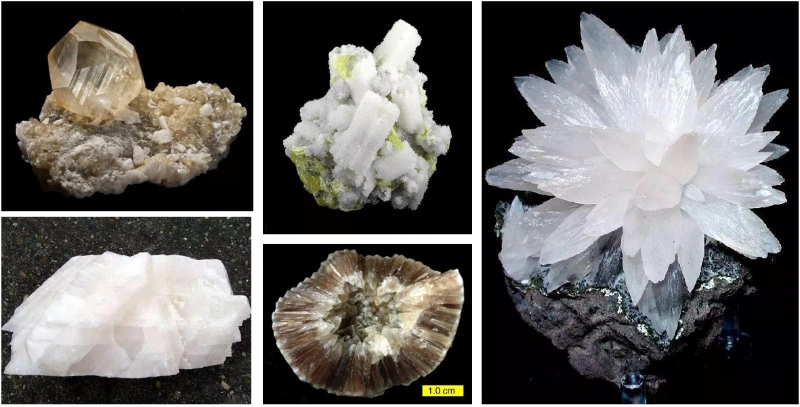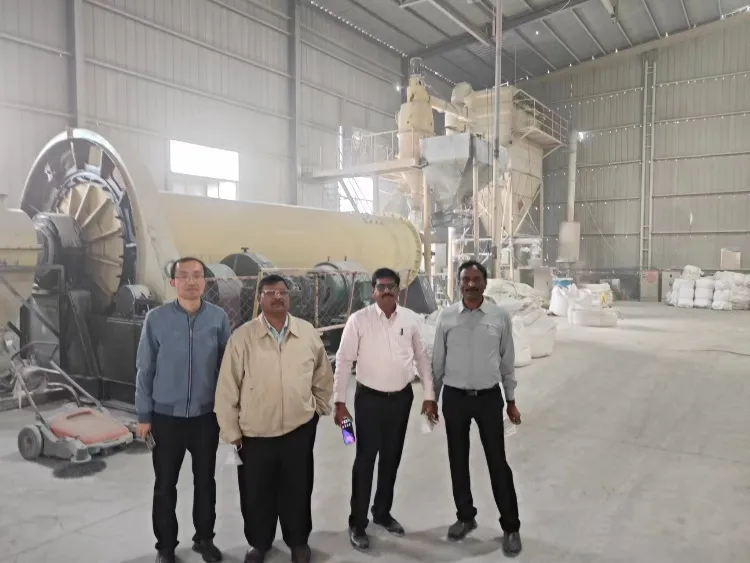Calcite is a natural calcium carbonate mineral and the primary raw material for ground calcium carbonate (GCC). The grade and impurity content of calcite ore directly impact the quality of the final product. High-end calcium carbonate from calcite requires high-purity ore with low levels of heavy metals and other impurities. These factors determine whether the product can be used in food, pharmaceutical, and other premium applications, or only as general filler-grade calcium carbonate.

To fully evaluate calcite ore quality, the following items are tested: CaO, whiteness, HCl insolubles, MgO, SiO₂, Al₂O₃, Fe₂O₃ (TiO₂), MnO, heavy metals (Pb, Hg, Cr⁶⁺, Cd), Ba, F, As, alkali metals, reducing sulfur. Also, dark impurities, yellowness, and transparency may be tested if required. This ensures a full understanding of ore quality and its application potential. It also provides reference for users with different usage needs.
Different industrial uses require different calcite quality standards. Common indicators include CaCO₃ content, whiteness, and acid-insolubles. For daily-use products (food additives, feed, pharma, toothpaste, toys, etc.), calcium carbonate from calcite quality must be higher, especially for toxic heavy metals. Strict limits apply to Pb, Cr⁶⁺, As, Hg, Cd, Ba, etc. For pharma, food, and toothpaste, S, SO₄²⁻, Cl⁻, F⁻, alkali metals, free alkali, and Mg must also meet specific requirements.
CaO Content
CaO is the sole useful component indicating ore quality. In paper, coatings, plastics, rubber, and food industries, CaCO₃ content (convertible from CaO) is used as the standard.
Whiteness
Whiteness indicates the physical quality of the ore, affecting product color and brightness.
High whiteness is required for calcium carbonate products, typically ≥90, ≥91, ≥92, ≥93, or ≥94. However, most mined ores test at 85–90, and few average above 90.
Key elements affecting whiteness are Fe and Mn. Whiteness can be improved by reducing Fe³⁺ to soluble Fe²⁺ for removal, and masking Mn and other color-causing elements, raising whiteness by over 5 points.
HCl-Insolubles
HCl-insolubles (A.I.R) mainly include free SiO₂ (fSiO₂), aluminosilicates, and Fe-Mn oxides.
These are multi-mineral indicators. fSiO₂ and hard silicates like tremolite, actinolite, diopside, feldspar, and garnet affect both calcium carbonate quality and processing equipment.
However, such silicates are rare in most ores.
Soft silicates like sericite, muscovite, talc, and kaolinite have minimal impact. Thus, fSiO₂ is the key concern in HCl-insolubles. Its content should be evaluated separately when needed, usually ≤0.5%.
Magnesium and Alkali Metals Content
MgO indicates the dolomite content in the ore. In paper and plastics, dolomite <3% (MgO ≤0.65%) is acceptable. In coatings and rubber, up to 6% dolomite (MgO ≤1.3%) is tolerable. MgO from talc or serpentine is generally not considered problematic. For pharmaceutical and food-grade calcium carbonate, Mg and alkali metals must be ≤1%.
SiO₂ Content
SiO₂ mainly comes from free SiO₂, aluminosilicates, and silicate minerals. The main silicate mineral is wollastonite, which differs in hardness from calcite. This affects the uniformity of product particle size. Washing can remove some Si, Al, and Fe from calcite, and improve the ore’s whiteness.
Al₂O₃ Content
Al₂O₃ mainly comes from aluminosilicate minerals and is a key component of HCl-insolubles. The allowable limit for Al₂O₃ should not exceed the limit for HCl-insolubles. Knowing the Al₂O₃ content helps analyze the mineral composition of HCl-insolubles.
Fe₂O₃ Content
Fe₂O₃ is a coloring component, and its content affects product color. Industry experience shows that Fe₂O₃ ≤ 0.3% has little effect,
and Fe₂O₃ ≤ 0.1% has almost no impact. Fe²⁺ exists in various minerals, and if it undergoes redox during processing, its impact should be monitored.
For pharmaceutical and toothpaste-grade calcium carbonate, Fe³⁺ levels are critical. As Fe ions can change valence, they can be improved in whitening processes. Thus, Fe content is used as the unified quality indicator, and product quality requirements directly reference Fe data.
MnO Content
MnO in calcite ore mainly comes from manganese oxides, carbonates, and silicates. MnO affects whiteness. Generally, if the ore meets whiteness requirements, MnO has no impact. However, Mn is a variable-valence element, and may cause color changes during processing due to redox reactions.
Harmful Content
Heavy metals, barium, fluorine, arsenic, free alkali, (alkali metals + magnesium), sulfur and other indicators. These indicators need to be evaluated for products used as food additives, toothpaste and food packaging paper production, or for rubber products and plastics and coating fillers that have an impact on health.
In other words, if the content of heavy metals and other harmful substances in the calcite ore exceeds the standard, don’t consider producing food-grade, pharmaceutical-grade, feed-grade and toothpaste-grade calcium carbonate.
Dark Impurity Content
Dark impurity content and particle size affect the whiteness of calcium carbonate from calcite. It is recommended to qualitatively assess these impurities to determine suitability for ultrafine processing. For paper-grade calcium carbonate , dark impurities are a critical evaluation factor. Typically, no more than 5 dark particles per gram of sample is considered acceptable.
Yellowness and Transparency
The whiteness currently tested, also known as blue light whiteness, is actually the brightness of the material and cannot reflect the color difference of the material well. Therefore, heavy calcium carbonate for papermaking needs to be evaluated for yellowness and transparency. The papermaking industry hopes for low yellowness, low transparency, and good hiding. Calcite with high whiteness often has good transparency.
Epic Powder

Epic Powder, 20+ years of work experience in the ultrafine powder industry. Actively promote the future development of ultra-fine powder, focusing on crushing, grinding, classifying and modification process of ultra-fine powder. We have many calcium carbonate projects around the world. Contact us for a free consultation and customized solutions! Our expert team is dedicated to providing high-quality products and services to maximize the value of your powder processing. Epic Powder—Your Trusted Powder Processing Expert !
